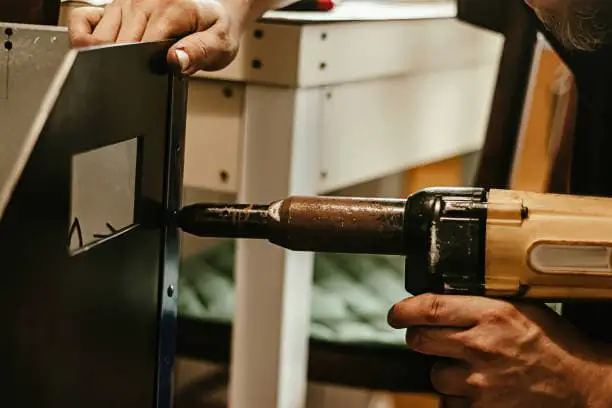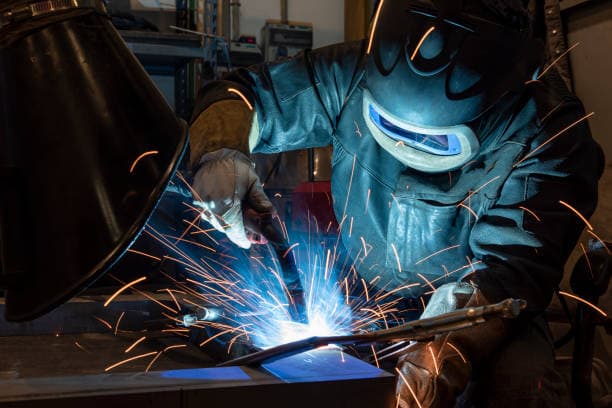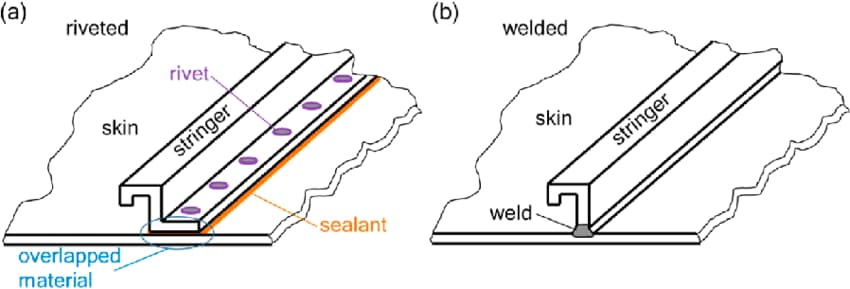What's fascinating?

Riveting is a mechanical process that involves connecting multiple parts by applying axial force to a nail shank in a rivet hole of a part, thus forming a nail head. It is a method of establishing a mechanical connection between components.
Riveting is divided into:
1. Movable riveting: The joint parts can rotate with each other, creating a non-rigid connection. Examples include scissors and pliers.
2. Fixed Riveting: The joints are fixed and do not move relative to each other, resulting in a rigid connection. Examples include an angle ruler, a nameplate on a three-ring lock, and bridge construction.
3. Seal riveting: The riveted joint is hermetically sealed to prevent gas and liquid leakage, resulting in a rigid connection.
What is welding?

Welding, also known as fusion welding, is a manufacturing process and technology for joining metals or thermoplastic materials such as plastics. This process is carried out through heating, high temperature or high pressure.
There are several energy sources used in modern welding, including gas flame, arc, laser, electron beam, friction, and ultrasonic waves.
Welding can be performed in a variety of environments, including factories, fields, underwater, and even in space.
However, it is important to highlight that welding can pose a risk to the operator, regardless of the environment. Therefore, appropriate protective measures must be taken to minimize the potential for damage.
Possible injuries associated with welding include burns, electric shock, damage to vision, inhalation of toxic gases and excessive exposure to ultraviolet radiation.
What are the advantages and disadvantages of welding compared to riveting?
Advantages of welding over riveting
Compared to riveting, welding has the following advantages:
1. High connection strength and good sealing properties: Welding creates a metallurgical bond that results in optimal strength.
2. Lightweight joints: Welding typically involves a simple butt joint, reducing the weight of the joint. In contrast, riveting requires polishing the base metal and a large number of rivets.
3. Low connection costs: Welding is generally economical and saves time and effort.
4. Ease of use and versatility: Welding is easy to use and can be applied to different connection forms.
Disadvantages of welding compared to riveting
A disadvantage of welding is that it often results in relatively large deformations, making it less suitable for connecting thin parts.
Advantages of riveting
An advantage of riveting is that it results in minimal deformation of the connection and has low environmental requirements. Riveting can be carried out in a variety of conditions, including wind, water and oil, making it particularly suitable for connecting thin parts.
Disadvantages of Riveting
The connection joint has low strength, poor sealing, low efficiency and heavy joint.
What is the difference between riveting and welding?

Riveting is a process of connecting multiple parts by applying axial force to a nail shank, causing it to expand and form a head inside the part's rivet hole.
Typically, riveting involves drilling holes in the parts to be connected, inserting a rivet, and then using a rivet gun to expand the rivet and secure the connection. This method is commonly used to connect two plates or objects of small thickness.
The difference between riveting and welding is:
1. Lighter weight: Welded products are lighter compared to riveted parts, which reduces the overall weight and saves energy in transportation vehicles.
2. Different categories: Welding can be divided into three categories: fusion welding, pressure welding and brazing. Riveting can be divided into three types: movable riveting, fixed riveting and sealing riveting.
3. Distinct processes: The welding process can result in various manifestations in the metal, such as welding cracks, air holes, undercuts, incomplete penetration, incomplete fusion, slag inclusions, weld beads, collapses, pits, burns and inclusions . The riveting process involves drilling, corrugating, deburring, inserting rivets, lifting the rivets with a top die, and riveting with a rotary riveter or by hand.

























































